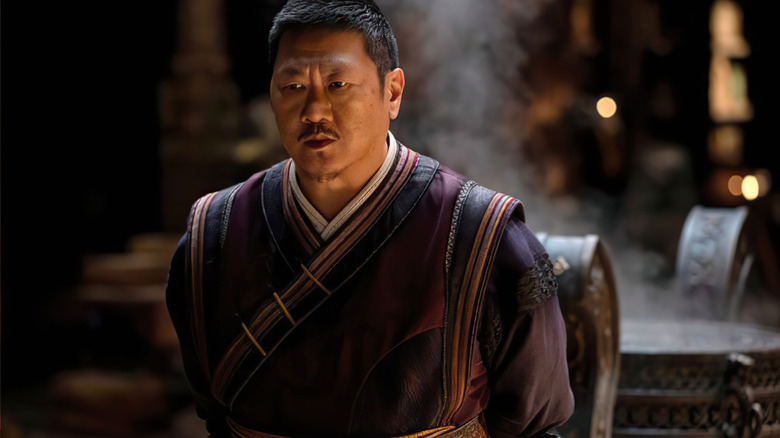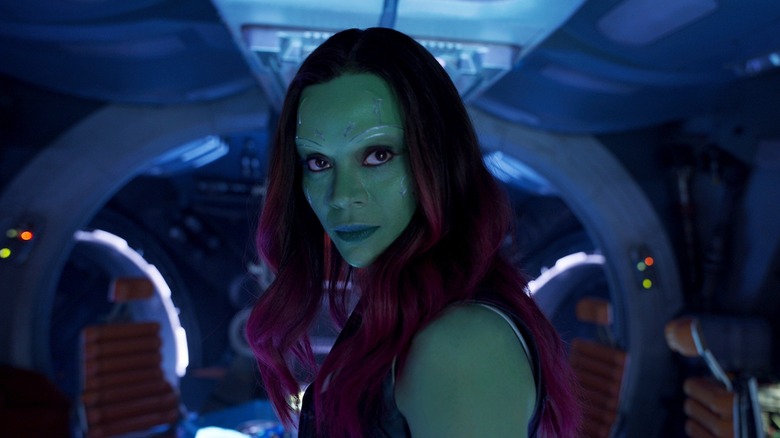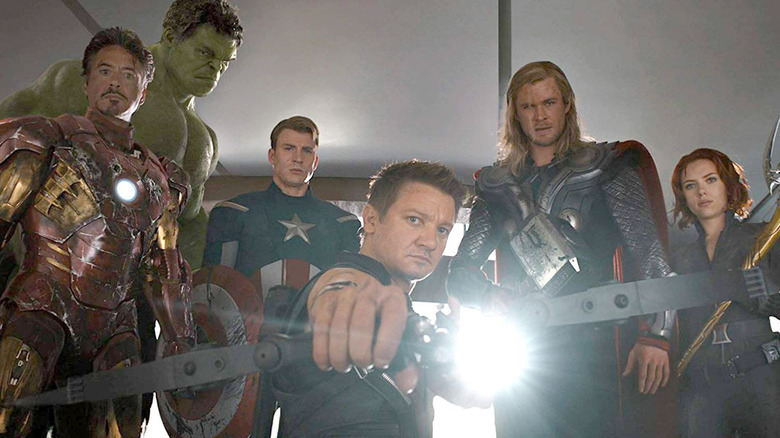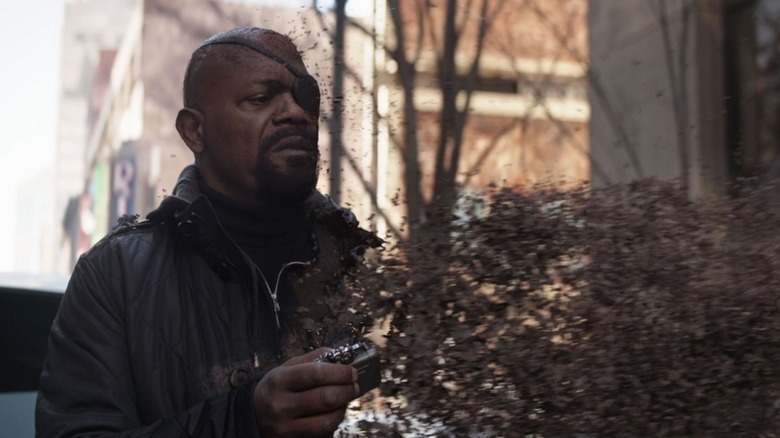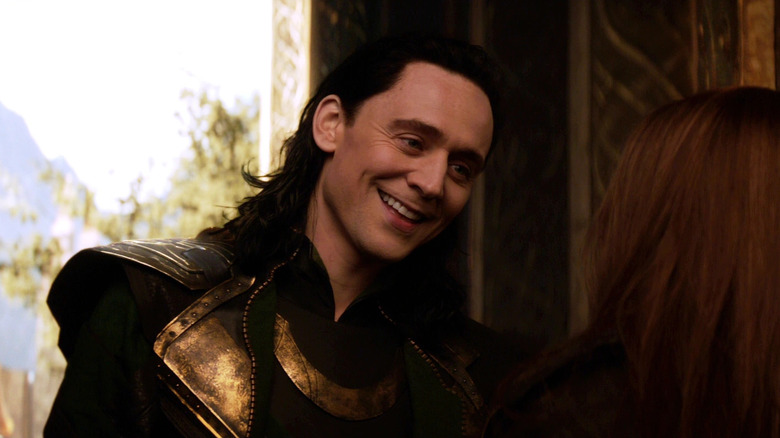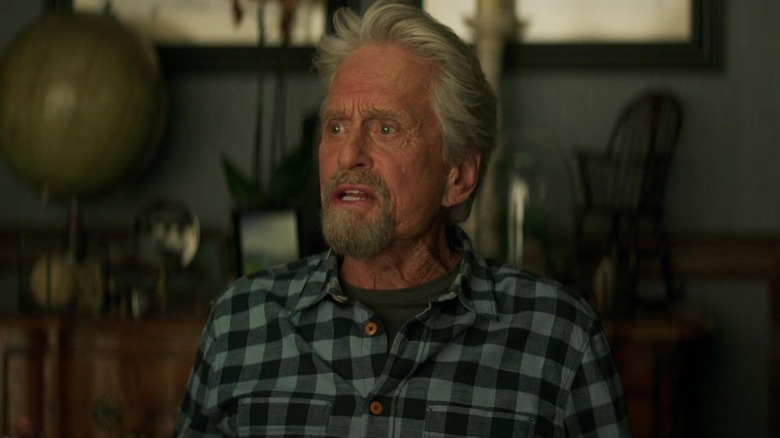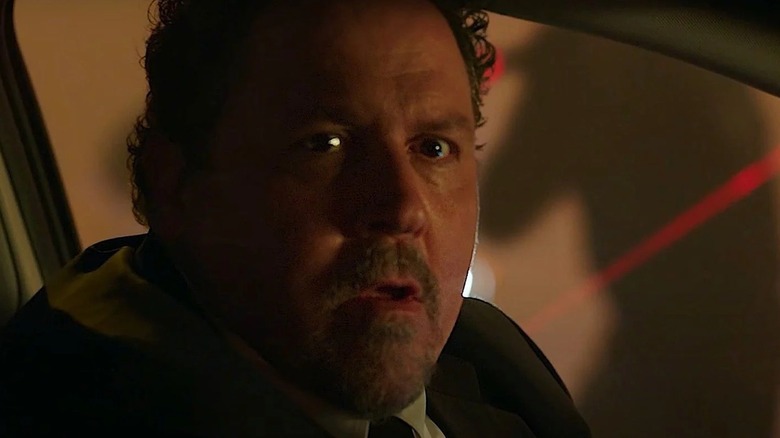12 Marvel Movie & TV Characters Who Were Supposed To Die
Longtime readers of superhero comics will be able to tell you that death is little more than an inconvenience. Famous characters are regularly killed, only to be resurrected several months later through whatever magical conceits the writers can invent. One might find that a superhero didn't actually die, but only fell into a Kryptonian coma. Or perhaps a compatriot of the deceased has access to black magic and can resurrect their dead friend with the help of a few handy spells. Time travel is also useful for retrieving a downed solider.
Now that the multiverse is part of the Marvel Cinematic Universe, audiences everywhere are learning that there are no stakes whatsoever. If there are infinite parallel versions of every character, any one of them dying can be undone in a jiffy. One can merely hop over to a parallel universe, pick up a duplicate, and return without any consequences. This was done with flippant snickers in the recent hit "Deadpool & Wolverine."
Learning, then, that a Marvel character was to be killed off in one of the many MCU movies or TV shows doesn't have quite the shocking impact it might've had before. Regardless, the many writers working within the MCU have tried to shake things up from time to time by murdering a beloved character, perhaps in the hopes that they would stay dead and leave a lasting imprint on the MCU. Also, even if an audience knows that a character can be resurrected, it may still be shocking to witness, say, Wong (Benedict Wong) be killed off, because Wong is a great character. Indeed, it was recently revealed that Wong was supposed to die in "Doctor Strange in the Multiverse of Madness," and that would have bummed people out.
Below is a list of other MCU characters that writers proposed should be led to the chopping block, only to be rescued at the last minute by additional life-giving brainstorming sessions.
Gamora was supposed to die in Guardians of the Galaxy Vol. 2
Speaking to ComicBook.com in 2023, writer/director James Gunn confirmed that he'd fully intended to kill Gamora (Zoe Saldaña), one of the key members of the titular team, during the events of "Guardians of the Galaxy Vol. 2." Gunn said there was going to be a scene wherein Gamora and her would-be lover Peter Quill (Chris Pratt) were to be put in a tight spot, requiring Gamora to sacrifice herself to save them. The idea was that Quill, previously childish and immature, would grow up in that moment, shaken into growth by grief. Gunn's plans, however, were halted by Marvel executives Kevin Feige and Lou D'Esposito, who said they needed Gamora to be alive for the film "Avengers: Infinity War," which was in production at the time. To quote Gunn directly:
"I knew from the beginning Zoe only wanted to play the character for so many years, and she's been very honest saying that she's done. And so I was going to have her die. I thought she was the one that was going to sacrifice herself, and Quill was going to learn about himself as opposed to in the second movie, and I thought different of it. I was kind of talked out of it by Kevin and Lou, and then it just didn't work that well. It didn't feel right."
Perhaps ironically, Feige and D'Esposito only rescued Gamora to kill her in "Infinity War," wherein the villain Thanos (Josh Brolin) hucks her off a cliff in exchange for a magical Infinity Stone. But, as mentioned earlier, death is impermanent in the MCU, so an alternate version of Gamora was culled from another timeline to participate in "Avengers: Endgame" and "Guardians of the Galaxy Vol. 3."
All six of the original Avengers were going to die in Avengers: Endgame
In Joss Whedon's 2012 film "The Avengers," six characters, previously glimpsed in earlier movies were assembled on the big screen, mirroring a comic book lineup first gathered in the 1960s. The Avengers consisted of Iron Man (Robert Downey, Jr.), Hawkeye (Jeremy Renner), the Incredible Hulk (Mark Ruffalo), Black Widow (Scarlett Johansson), Thor (Chris Hemsworth), and Captain America (Chris Evans). The success of the 2012 film assured the MCU film series would continue, although no one could have guessed how bloated it would eventually become. The core six members would often find themselves in the same room in all the subsequent team-up movies, and all six of them would survive the half-universe genocide enacted by Thanos in "Infinity War."
However, when interviewed for the "Happy. Sad. Confused" podcast in 2022, "Infinity War" and "Endgame" co-director Joe Russo revealed that there was an early idea – before a script had been written — to gather those core six characters around some sort of "fire" and force them all to jump in, killing themselves but also stopping the fire and saving the universe in "Endgame." Russo didn't go into detail beyond that, though, merely explaining:
"Kevin [Feige] early on had pitched this idea that it was like 'Toy Story 3' where they should all actually jump into the fire in order to save the universe, and we thought you have to step out storytelling on something of this scale, so we weren't quite sure how the math would add up to get to that."
That would have been a satisfying ending, of course, but Russo preferred a less drastic murder spree. Instead, only Iron Man and Black Widow die in "Endgame," with Captain America retiring in the final scene. The other three Avengers have since returned in other films or Disney+ shows.
Nick Fury was going to be stabbed through the heart in Avengers: Endgame
Samuel L. Jackson's character Nick Fury served as the non-combatant coach for the Avengers, assembling all its members in the first place. At the end of "Avengers: Infinity War," Fury was one of the many characters who was dissolved by Thanos' magical half-the-universe-at-once killing spree. When the heroes rescued the Infinity Stones (via time travel), they restored everyone who had died, including Fury. One might think the Avengers could have used the Stones more cleverly. Maybe create a universe where not only was everyone alive, but that was also plentiful in natural resources, perhaps? Also, they could eliminate war and hunger and disease? The heroes aren't very clever.
After Fury was resurrected, he reported to the battlefield for a prolonged fight with Thanos and his minions. It seems there was going to be a moment when Fury was to face off against Thanos' general Corvus Glaive (Michael James Shaw), and he was going to be stabbed through the back with a giant, glowing sword.
This detail was revealed in a concept drawing by Stephen Schirle, one of the many artists who worked on "Endgame." The drawing of Fury was revealed on X, a.k.a. Twitter, and it certainly looks like the kind of death that even the stalwart Nick Fury couldn't recover from. MCU fans will recall that Fury was also seemingly killed in "Captain America: The Winter Soldier" but came back later in the film, having faked his death.
Loki was to be killed at the end of Thor: The Dark World
Loki (Tom Hiddleston) was introduced in Kenneth Branagh's 2011 film "Thor," but the character rarely got his due. He was described as a liar and a trickster, but he was so poorly written that he never emerged as a true agent of chaos. His motivations changed from film to film, he didn't seem to have a single knowable goal, and his levels of villainy fluctuated. It's a testament to actor Hiddleston that Loki emerged as en engaging figure at all. Audiences simply had to take for granted that he was a villain and that he needed to be stopped.
Loki was the central villain in 2012's "The Avengers" before becoming Thor's reluctant helper in "Thor: The Dark World," a film that pitted Loki and Thor against a dark elf named Malekith (Christopher Eccleston). Loki is seemingly killed in battle, though, leaving Thor to charge into the film's climax all by his lonesome. In a twist ending, however, it's revealed that Loki not only survived somehow, but has also shapeshifted into his own father, King Odin (Anthony Hopkins), and take his place on the throne of Asgard.
In a 2021 interview with Entertainment Weekly, Hiddleston revealed that "Dark World" was originally meant to be the end of the line for the character. It seems, though, that test audiences liked Loki too much for him to die a permanent death, so he was resurrected in reshoots. Loki would later be killed again in "Avengers: Infinity War," this time for good. In "Avengers: Endgame," however, an alternate timeline version of Loki was able to evade his dark fate, setting the stage for the character's Disney+ series. As of this writing, this iteration of Loki is still alive in the MCU.
The original Ant-Man would have had his consciousness assimilated by an ant colony in Ant-Man and the Wasp: Quantumania
Peyton Reed's 2023 film "Ant-Man and the Wasp: Quantumania" made over $463 million at the box office. However, because the film carried a $200 million budget (and may have actually cost much, much more than that), it was deemed a commercial bomb. What's more, critics weren't kind to the film, and even many stalwart MCU fans found themselves a little bored with the movie's superhero shenanigans. Indeed, 2023 may very well be remembered as the year the superhero genre, as a dominant cultural force, finally died out in earnest (the nostalgia orgy of 2024's "Deadpool & Wolverine" notwithstanding).
Speaking of dying in earnest, it seems Hank Pym (Michael Douglas) nearly met his maker in "Quantumania." The film follows the now-retired Ant-Man, whose work in particle physics allowed him to invent matter-shrinking technology, along with the current Ant-Man, Scott Lang (Paul Rudd), the Wasp (Evangeline Lilly), and a few other characters on an adventure in the Quantum Realm, a dimension that can only be accessed by shrinking to sub-quark sizes. There, the heroes end up battling a dictator named Kang (Jonathan Majors), with the original plan being for Hank to die in the fracas.
This detail was shared in a video interview that screenwriter Jeff Loveness conducted with Backstory Magazine. Loveness didn't explain how, but the idea was that Hank's disembodied consciousness would, after his death, somehow integrate with an ant colony. This would've meant that Hank wasn't actually dead, and that Michael Douglas could merely be replaced in future films by a swarm of CGI insects. This would have been a novel character shift, I suppose, although many may not share my enthusiasm. Perhaps this death wouldn't have counted.
Happy Hogan was to stay dead in Iron Man 3
Shane Black's "Iron Man 3" is handily one of the best films in the MCU, featuring a hero stripped of his super-suit for the bulk of the film and having to rely on his wits to survive. It also includes a clever twist with its villain, revealing that a dangerous terrorist called the Mandarin (Ben Kingsley) is actually a zany, upbeat British actor in the employ of an even more insidious villain.
Although the Mandarin is fake, the dangerous technology used by the real villain is very real, and, partway through the movie, Iron Man's assistant Happy Hogan (Jon Favreau) is injured in an explosion. Favreau conducted an interview on TikTok in 2021, handily transcribed by GeekTyrant, and the actor/director revealed that the explosion was originally meant to vaporize Happy and remove him from the MCU altogether. Later in the film, however, Happy is seen recovering in the hospital, free to return for additional Avengers, Spider-Man, and Deadpool movies.
Favreau revealed that he left a note for Kevin Feige, asking that Happy survive. Favreau, of course, wanted to ensure that he would be able to come back for sequels, but Feige was willing to accommodate. And since character crossovers are the central feature of the MCU, keeping many characters alive can only help for future connections.
